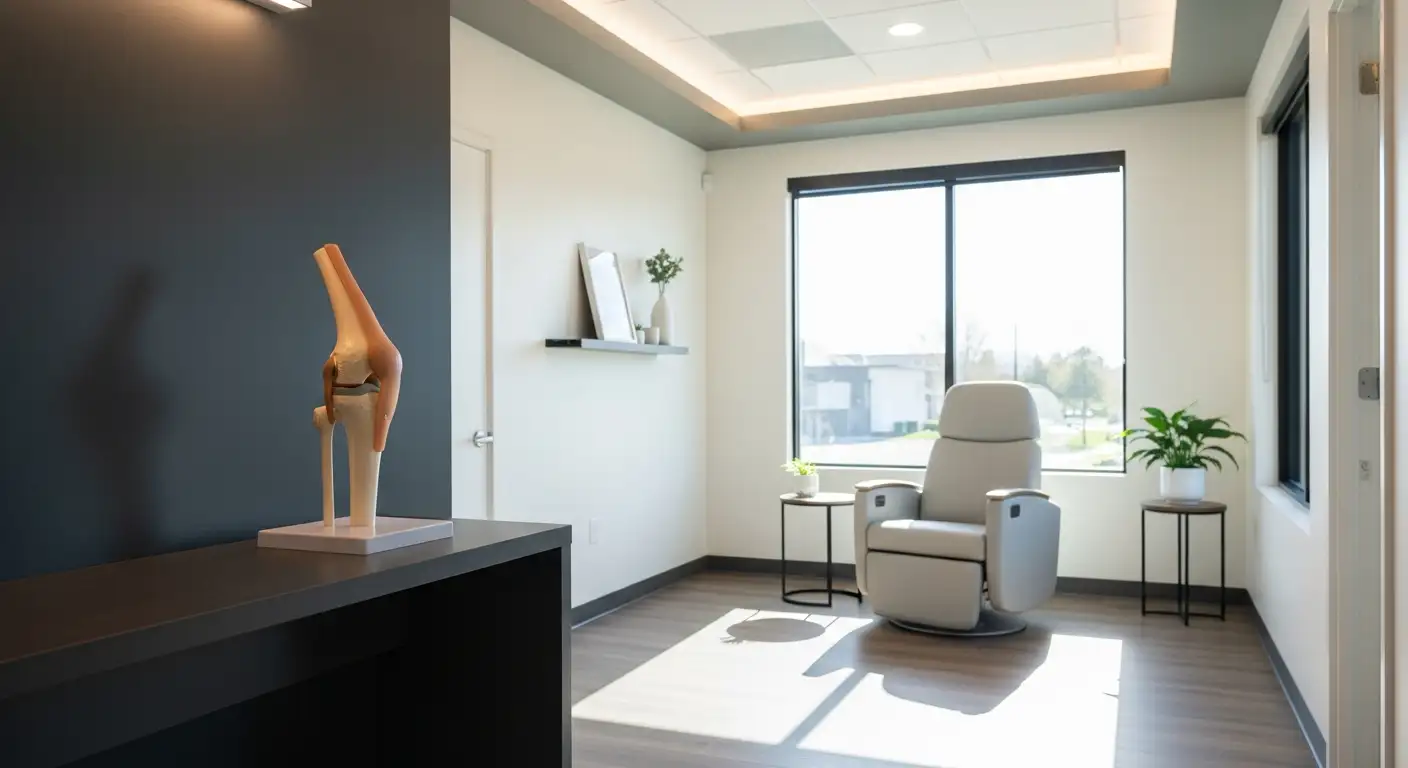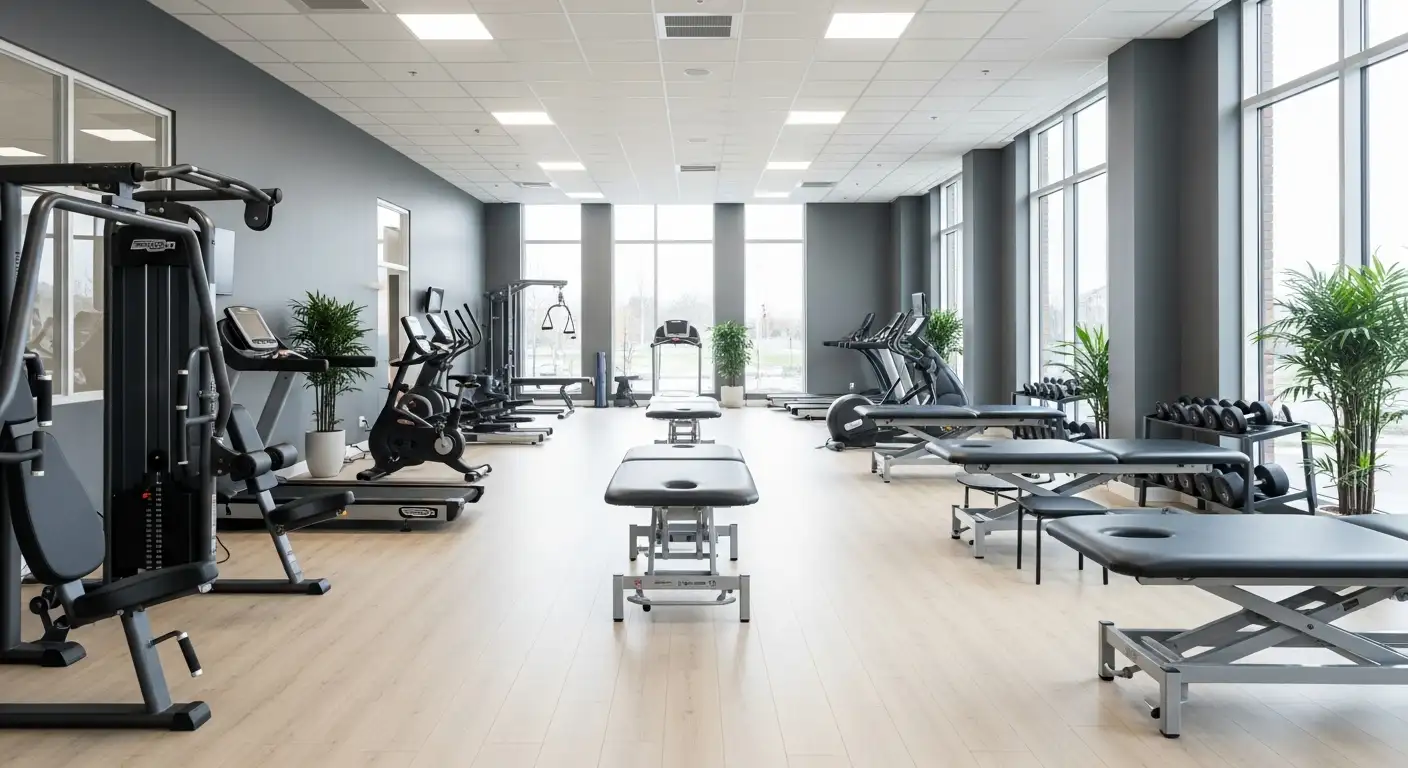Understanding Side Knee Pain
Side knee pain when walking can be a frustrating and uncomfortable experience. It is important to understand the causes and underlying conditions that can contribute to this type of pain.
Causes of Side Knee Pain
One common cause of side knee pain when walking is iliotibial band syndrome. This condition occurs in the lateral (outside) part of the knee and is often seen in runners, cyclists, and hikers. The iliotibial band is a thick band of tissue that runs along the outside of the thigh, from the hip to the knee. When this band becomes tight or inflamed, it can result in iliotibial band syndrome, causing side knee pain when walking. Factors such as overuse, improper training techniques, running on banked surfaces, or muscle imbalances can contribute to the development of this condition.

Another potential cause of side knee pain when walking is lateral meniscus tears. These tears affect the cartilage in the outer edge of the knee, leading to pain and potential catching or locking of the knee joint during movement.
Other potential causes of side knee pain when walking include:
- Bursitis: Lateral collateral ligament bursitis, which involves inflammation of the bursa sacs that cushion the knee joint, can lead to discomfort and pain on the outer side of the knee.
- Stress fractures: Small cracks in the bone, often caused by repetitive stress or overuse, can result in side knee pain during weight-bearing activities like walking or running.
- Osteoarthritis: While osteoarthritis typically affects the inner side of the knee joint, it can also cause pain on the outer side of the knee in some cases [2].
Common Conditions and Injuries
Understanding the common conditions and injuries associated with side knee pain can help in identifying the underlying cause. These conditions include:
- Iliotibial Band Syndrome: This condition, also known as runner's knee, occurs due to overuse of the iliotibial band. It leads to inflammation and pain on the outer side of the knee, which can be aggravated by activities such as climbing stairs or walking long distances [2].
- Lateral Meniscus Tears: Tears in the cartilage of the outer edge of the knee can cause side knee pain and potential joint issues during movement.
- Bursitis: Inflammation of the bursa sacs that cushion the knee joint, particularly the lateral collateral ligament bursa, can result in discomfort and pain on the outer side of the knee [2].
- Stress Fractures: Small cracks in the bone due to repetitive stress or overuse can lead to side knee pain during weight-bearing activities like walking or running.
- Osteoarthritis: Although osteoarthritis primarily affects the inner side of the knee joint, it can also cause pain on the outer side in some cases.
It is important to recognize that these are not the only potential causes of side knee pain when walking. Consulting with a healthcare professional for an accurate diagnosis and appropriate treatment is essential for addressing this discomfort and ensuring the best course of action based on the specific underlying condition or injury.
Iliotibial Band Syndrome
Iliotibial Band Syndrome is a common condition that can cause side knee pain when walking. It occurs in the lateral (outside) part of the knee and is often seen in runners, cyclists, and hikers. The iliotibial band is a thick band of tissue that runs along the outside of the thigh, from the hip to the knee. When this band becomes tight or inflamed, it can result in iliotibial band syndrome, leading to side knee pain when walking.
Symptoms and Diagnosis
The primary symptom of iliotibial band syndrome is pain on the outer side of the knee. This pain may worsen with activity, especially during walking, climbing stairs, or running. Some individuals may also experience a clicking or popping sensation in the knee during movement [2].
To diagnose iliotibial band syndrome, a healthcare professional will likely perform a physical examination and review your medical history. They may also conduct additional tests, such as imaging studies or specialized tests, to rule out other possible causes of knee pain and confirm the diagnosis.
Treatment and Prevention
Treatment for iliotibial band syndrome and side knee pain when walking may include a combination of the following approaches:
- Rest and Ice: Taking a break from activities that aggravate the symptoms and applying ice to the affected area can help reduce pain and inflammation.
- Pain Relief: Nonsteroidal anti-inflammatory drugs (NSAIDs) may be recommended to alleviate pain and swelling.
- Physical Therapy: A physical therapist can provide targeted exercises and stretches to address muscle imbalances and strengthen the surrounding muscles, helping to alleviate the stress on the iliotibial band.
- Modalities: Techniques such as ultrasound or massage may be used to promote healing and reduce inflammation.
- Gait Modification: Adjusting movement patterns and gait mechanics can help reduce stress on the iliotibial band and prevent future flare-ups.
- Proper Footwear: Wearing supportive footwear with appropriate cushioning and stability can help maintain proper alignment and reduce excessive stress on the knees.
- Gradual Return to Activity: Gradually reintroducing physical activities and sports after the symptoms have improved can help prevent recurrence of iliotibial band syndrome.
In some cases, if conservative measures do not provide sufficient relief, a healthcare professional may recommend more advanced interventions, such as corticosteroid injections or, in severe cases, surgery. However, these options are typically considered when other treatments have been unsuccessful.
It is advisable to consult a healthcare professional if side knee pain when walking persists, worsens, or interferes with daily activities. They can provide a proper diagnosis and develop an individualized treatment plan to address the underlying issue and relieve discomfort [1]. Additionally, incorporating preventative measures, such as maintaining proper conditioning, using appropriate footwear, and gradually increasing exercise intensity, can help reduce the risk of developing or aggravating iliotibial band syndrome in the future.
Lateral Meniscus Tears
Lateral meniscus tears are a common cause of side knee pain when walking. These tears specifically affect the cartilage in the outer edge of the knee, resulting in pain and potential complications during movement. It's important to understand the overview of lateral meniscus tears, their signs and symptoms, as well as the available treatment options.
Overview of Lateral Meniscus Tears
The lateral meniscus is the cartilage cushion located on the outside of the knee joint. Tears in this structure can occur due to various factors, such as sudden twisting or pivoting movements, direct impact, or degenerative changes over time. These tears can cause pain, swelling, and limited range of motion in the affected knee.
Signs and Symptoms
When an individual experiences a lateral meniscus tear, there are several common signs and symptoms to be aware of. These include:
- Sharp pain on the side of the knee during activities that involve squatting, pivoting, or other movements [3].
- Swelling in the knee joint.
- A feeling of the knee "locking" or "catching" during movement.
- Difficulty fully extending or flexing the knee.
- Instability or a feeling of the knee giving way.
If you are experiencing any of these symptoms, it is important to consult with a healthcare professional for an accurate diagnosis.
Treatment Options
Treatment for lateral meniscus tears can vary depending on several factors, such as the severity of the tear, the individual's activity level, and their overall health. Treatment options may include:
- Conservative approaches: For minor tears, non-surgical interventions such as rest, ice, compression, elevation (RICE method), physical therapy, and anti-inflammatory medications may be recommended to reduce pain and promote healing.
- Arthroscopic surgery: In cases where conservative methods do not provide sufficient relief, arthroscopic surgery may be necessary. This minimally invasive procedure involves using a tiny camera and specialized surgical instruments to repair or remove the torn portion of the meniscus.
- Rehabilitation: Following surgery or as part of conservative treatment, physical therapy is often recommended to strengthen the surrounding muscles, improve flexibility, and restore full function to the knee.
It is essential to consult with a healthcare professional to determine the most appropriate course of treatment for your specific condition.
Understanding the overview, signs and symptoms, as well as treatment options for lateral meniscus tears can help individuals dealing with side knee pain when walking. By seeking proper medical evaluation and following recommended treatments, it is possible to address the underlying cause of the pain and regain pain-free mobility.
Other Potential Causes of Side Knee Pain
In addition to the conditions discussed previously, there are several other potential causes of side knee pain when walking. These include bursitis, stress fractures, and osteoarthritis.
Bursitis
Bursitis, particularly lateral collateral ligament bursitis, is a potential source of side knee pain when walking. This condition involves inflammation of the bursa sacs that cushion the knee joint, leading to discomfort and pain on the outer side of the knee.
Stress Fractures
Experiencing side knee pain when walking could also be due to a stress fracture. These small cracks in the bone can develop over time due to repetitive stress or overuse, leading to discomfort and pain on the outer side of the knee during weight-bearing activities like walking or running.
Osteoarthritis
Osteoarthritis affecting the knee can also lead to side knee pain when walking. Osteoarthritis is a degenerative joint disease that causes the cartilage in the knee joint to wear down over time. The pain associated with osteoarthritis is often worse after inactivity and improves with movement.
It's important to note that these potential causes of side knee pain when walking require proper diagnosis by a healthcare professional. If you are experiencing persistent or worsening knee pain, seeking medical evaluation is recommended. By identifying the underlying cause of your side knee pain, appropriate treatment and management strategies can be implemented to alleviate discomfort and improve your walking experience.
Addressing Side Knee Pain
When dealing with side knee pain during walking, there are several strategies that can help alleviate discomfort and promote recovery. These include strengthening the hip muscles, wearing proper footwear, and seeking medical evaluation for an accurate diagnosis and personalized treatment plan.
Strengthening Hip Muscles
Strengthening the hip muscles, such as the glutes and deep hip rotators, can provide better support for the knee joint and help alleviate side knee pain. By focusing on exercises that target these muscle groups, individuals can improve their overall lower body stability and reduce stress on the knees. Incorporating exercises like hip abductions, hip extensions, and hip rotations into a regular workout routine can be beneficial in addressing side knee pain.
Proper Footwear and Gait
Maintaining proper footwear is crucial in preventing side knee pain during walking. It is important to choose shoes that offer good arch support and cushioning to absorb the impact of each step, reducing the strain on the knees [4]. Additionally, paying attention to your walking gait and avoiding overstriding or a heavy heel strike can also help minimize knee strain and potentially alleviate side knee pain.
Seeking Medical Evaluation
If side knee pain persists despite self-care measures, it is important to consult a healthcare provider or physical therapist for an accurate diagnosis and personalized treatment plan. They can perform a thorough evaluation, identify the underlying cause of the pain, and recommend specific interventions to address the issue. This may include additional exercises, physical therapy, or other appropriate interventions to alleviate side knee pain and promote healing.
By incorporating these strategies into your routine, you can take proactive steps to address side knee pain. Strengthening the hip muscles, wearing proper footwear, and seeking medical evaluation when necessary can contribute to relieving discomfort and improving your overall walking experience. Remember, it's essential to listen to your body and seek professional guidance for persistent or worsening pain.
References
[1]: https://www.mayoclinic.org/symptoms/knee-pain/basics/when-to-see-doctor/sym-20050688
[2]: https://www.mayoclinic.org/diseases-conditions/knee-pain/symptoms-causes/syc-20350849
[3]: https://www.verywellhealth.com/knee-pain-side-of-knee-5105270
[4]: https://www.renown.org/blog/5-tips-to-protect-your-knees-from-pain-and-injury





